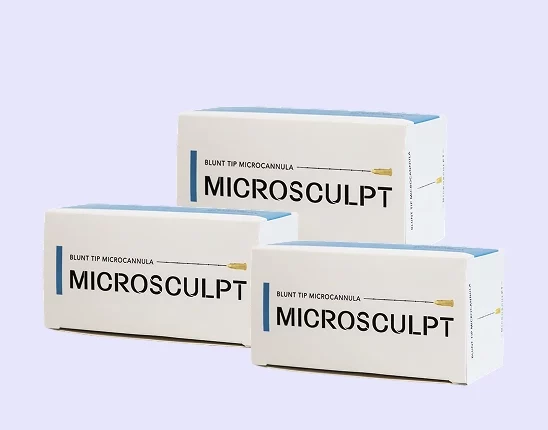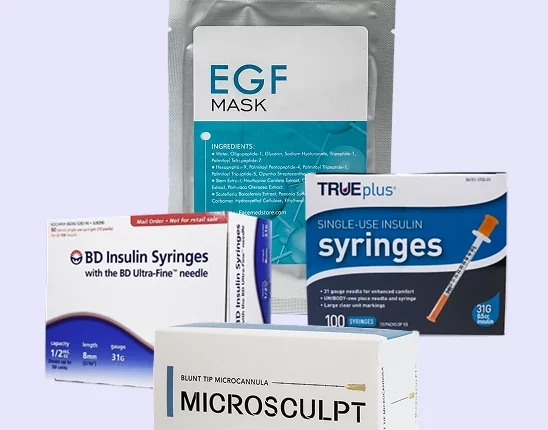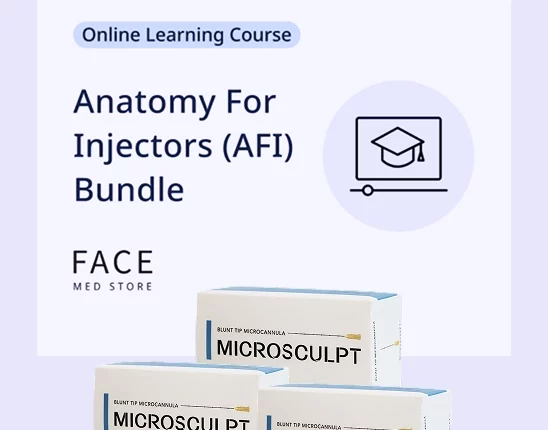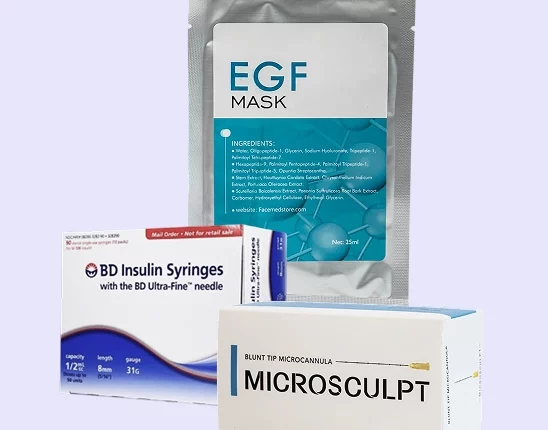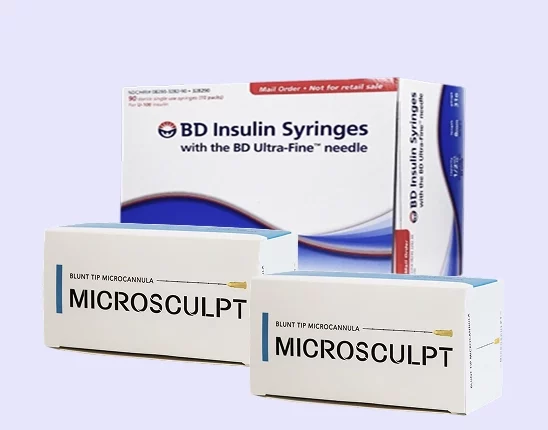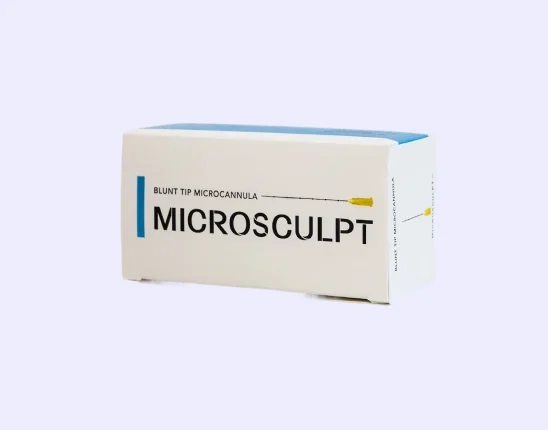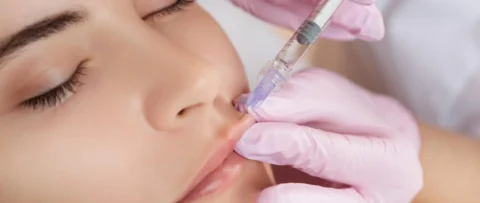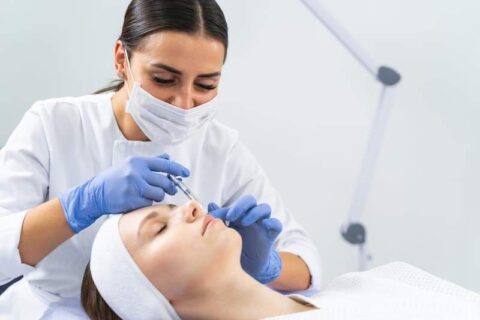Needles are not always used for injection. Like any medical device, needles are sub-categorized by their gauge, intended syringe pair, and function. Needles that are not used for injection are called “blunt-needles”, characterized by their crucial role in reducing needlestick injuries while preparing medicine.
So what exactly are blunt needles? They are used for drawing up medication before it gets injected from a vial or ampoule in a sterile and efficient manner. Every cosmetic practice should be familiar with this medical device, and should always have access to it at all times.
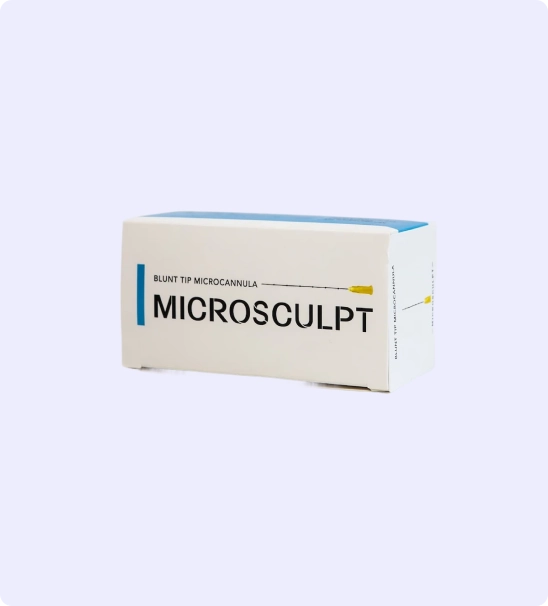
INJECTIONS YOUR PATIENTS WILL LOVE! CODE “20OFF” TAKES 20% OFF YOUR FIRST ORDER!
Microcannulas are a tool that every great injector must master. Patients want quick results with no downtime. Our microcannulas are high quality and a fraction of the price of our competitors!
You can create an account here.
The Structure of a Blunt Needle
Blunt needles are almost identical to sharp-tip needles, with the key difference of having an unbevelled (or pointed) tip. There are two kinds of blunt needles:
- Blunt fill needles, which function as filling or extraction needles. They can draw medicine out of any sealed medical container and transfer their contents to the desired container.
- Blunt filter needles, which are filler needles with an extra filter attachment. This filter keeps out any solid particles from the liquid solution, especially if it’s been mixed from a powdered form.
Fill needles are necessary because medications are not usually pre-packed in syringe form except for insulin shots. It’s possible to still extract medication from containers via sharp-tip needles, but that method increases the risk of needlestick injury to the handler. Blunt needles are a safer yet still effective way of extracting and transferring liquid solutions from sealed containers.
Best Practices For Needle Handling, Disposal, and Medication Extraction
While they aren’t sharp, blunt needles are still medical devices and require careful attention.
1. Keeping a Blunt Needle Sterile
The best way to keep a blunt needle sterile is to avoid touching the needle itself. This prevents cross-contamination between your fingers/gloves and the solution you’ll be extracting using the needle. Always grip the needle by the plastic base and never touch the metal tubing.
2. Take Note Of the Syringe Tip
Most of the time, a blunt needle is used to transfer solutions to a syringe so you can inject it into a patient. Remember to check what kind of syringe tip you have before unwrapping your blunt needle. There are four types of syringe tips:
- Slip tips
- Luer Lok (screw) tips
- Catheter tips
- Eccentric (off-center) tips
If you realize that your syringe and blunt needle are incompatible after you’ve opened their packaging, you risk air or surface contamination.
3. Sterilize the Medication Container
While vials of medication can keep their contents sterile, the initial moment of contact between the blunt needle and the seal can still be prone to surface contamination. Always sterilize the medication container by disinfecting it with alcohol swabs.
4. Make Sure to Dispose Them Properly
Blunt needles cannot pierce through a material as easily as hypodermic needles, but you should still throw them away in a sharps disposal container. Some blunt needles have a plastic or silicone attachment that allows you to clip the needle inside, preventing it from puncturing through disposal containers.
Buy High-Quality, Affordable Needles and Syringes From FACE Medical Supplies
-
 Microcannula Multi-Gauge Precision Set
Microcannula Multi-Gauge Precision Set -
 Microcannula Complete Injection System
Microcannula Complete Injection System -
 Microcannula Size Progression Training Kit
Microcannula Size Progression Training Kit -
 Microcannula Professional Starter Kit
Microcannula Professional Starter Kit -
 Microcannula Volume Practice Pack
Microcannula Volume Practice Pack -
 23 gauge 50 mm (2 inch) Microcannulas
23 gauge 50 mm (2 inch) Microcannulas -
 22 Gauge 100 mm (4 inch) Microcannulas.
22 Gauge 100 mm (4 inch) Microcannulas. -
 27 Gauge 38 mm (1.5 inch) Microcannulas
27 Gauge 38 mm (1.5 inch) Microcannulas -
 25 Gauge 38 mm (1.5 inch) Microcannulas
25 Gauge 38 mm (1.5 inch) Microcannulas
A blunt needle is a crucial medical device that ensures any medication injected in the patient is free of contaminants. This prevents complications with the medicine or medical procedure and allows the surgeon or doctor to maintain a sterile environment.
FACE Medical Supply has considerable experience with delivering high-quality yet affordable medical devices to cosmetic practices around the United States. We provide medical-grade needles, syringes, and other products at lower prices, allowing you to remain compliant with medical regulations while cutting down operational costs. Visit our product page today!
Read more: Cannula vs Needle: What’s the Best Choice For Dermal Fillers?
